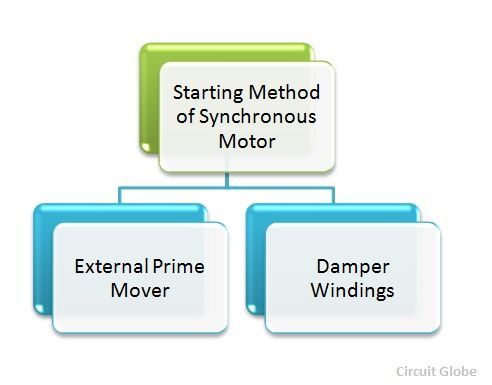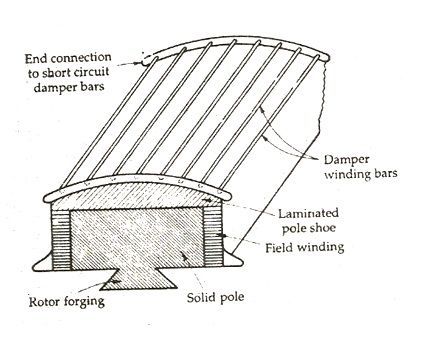A synchronous motor is a device that converts the AC into mechanical work at synchronous speed. The starting of the Synchronous Motor does not take place on its own. This means that the Synchronous Motor is not Self Starting. It can be started by the following methods given below:
- Starting with the help of an External Prime Mover
- Starting with the help of Damper Windings
A detailed description of the methods is explained below.
Motor Starting with an External Prime Mover
In this method, an external prime mover drives the synchronous motor and brings it to synchronous speed. The synchronous machine is then synchronized with the bus bar as a synchronous generator. The prime mover is then disconnected. Once operating in parallel condition, the synchronous machine will work as a motor. Thus, the load can be connected to the synchronous motor.
Since the load is not connected to the synchronous motor before synchronizing, the starting motor has to overcome the inertia of the synchronous motor at no load. Therefore, the rating of the motor which has to be started is much smaller than the rating of the synchronous motor. Now a day, a Brushless excitation system is provided on the shafts of the large synchronous motor. These exciters are used as starting motors.
Motor Starting with Damper Windings
Damper Windings is the most widely used method to start a synchronous motor. A Damper Winding consists of heavy copper bars inserted in the slots of the pole faces of the rotor as shown in the figure below.
These copper bars are short-circuited by end rings at both ends of the rotor. Thus, these short-circuited Bars form a squirrel cage winding. When a three phase supply is connected to the stator, the synchronous motor with Damper Winding will start. It works as a three-phase induction motor. As soon as the motor approaches the synchronous speed, the DC excitation is applied to the field windings. As a result, the rotor of the motor will pull into step with the stator magnetic field.



I have also heard that these motors can be also started like VFD by solid state means. Is it true ?